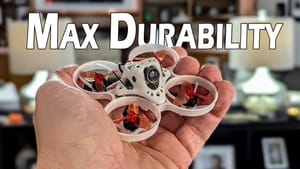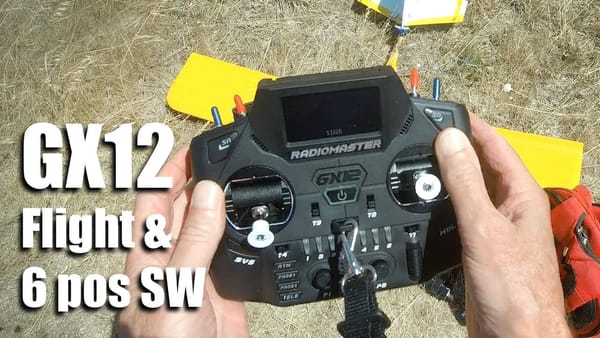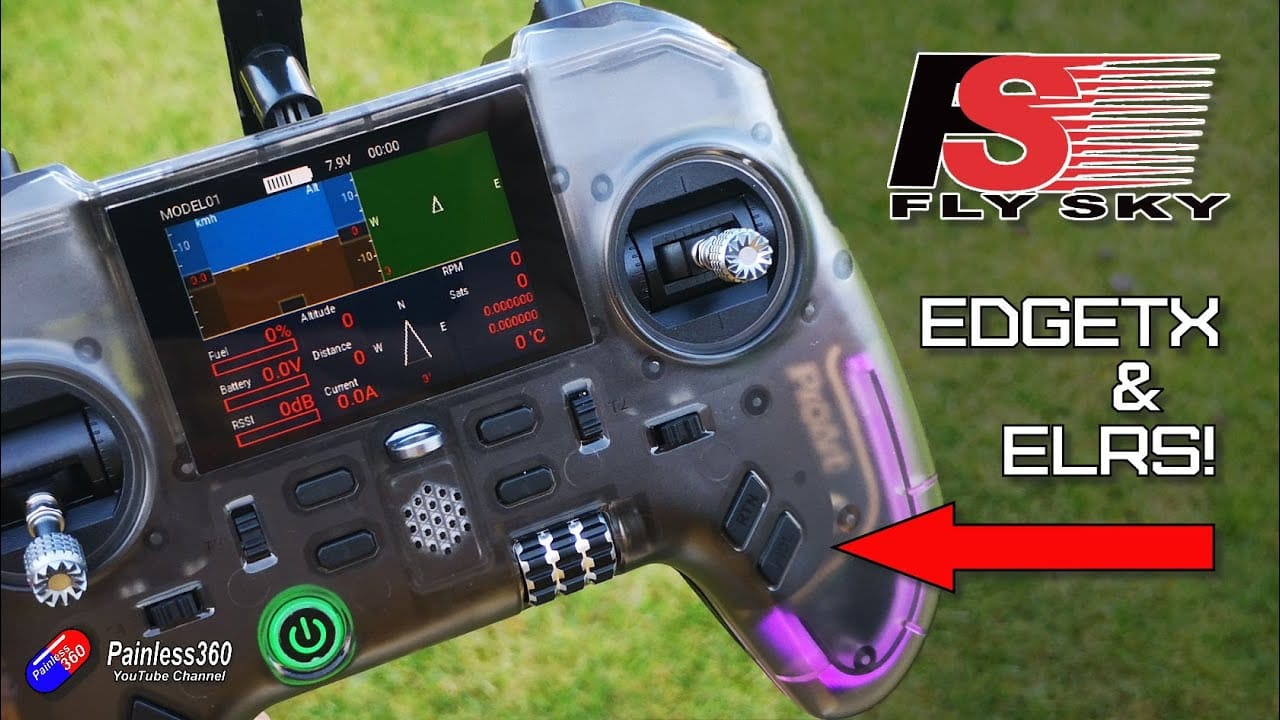
In this hands-on report, Painless360 takes us through FlySky’s freshly released PA01 (aka ProArt) radio. If you’ve been watching the RC landscape shift toward EdgeTX and ExpressLRS and wondered whether legacy vendors can keep up, this is the one to read. The PA01 is FlySky’s attempt to bridge their ecosystem (AFHDS3) with the modern, open-source world. It succeeds in surprising ways — and trips over a few usability snags.
Quick summary
- Radio: FlySky PA01 (ProArt) — ships with AFHDS3 internal RF but can be flashed to ExpressLRS
- Software: EdgeTX (no touchscreen)
- RF: Internal 2.4GHz AFHDS3 or ExpressLRS (either-or — you must flash to change)
- Screen: 2.4" 240×320 full-colour (not touch)
- Power: Runs on two 18650 cells (user-replaceable); USB‑C charging
- Form: Black translucent case with internal RGB LEDs, removable/adjustable sticks, folding antenna
- Weight: ~343 g (without batteries)
What Painless360 found: the specs and the punchline
Painless360 opens the unboxing by laying out the PA01’s headline specs: a compact EdgeTX radio that supports FlySky’s AFHDS3 on the internal module or ExpressLRS if you flash the unit. The key takeaway: FlySky shipped this with AFHDS3 by default, but you can move to ExpressLRS via the provided flashing app. It’s not a bi‑directional selection at runtime — it’s a firmware flash to pick your RF world.
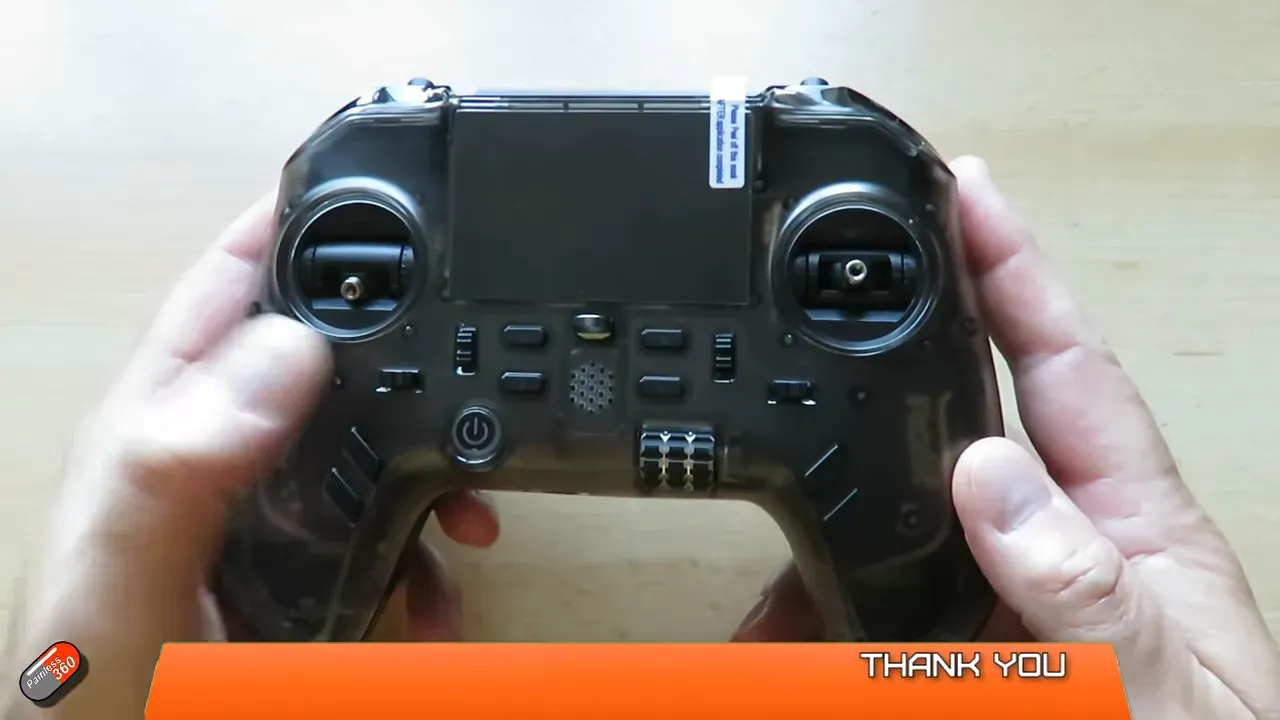
Notable technical details called out by Painless360:
- Internal channels: 18 for internal RF, 32 for external module use
- 2.4 GHz maximum power: just under 20 dBm (EU version)
- ExpressLRS version received: 3.0.5 (via the flashing app)
- Display: 2.4" 240×320 colour LCD (non-touch)
- Power cells: two 18650 cells under the grips (user‑replaceable)
Design and ergonomics — Tron vibes meet thumber comfort
The PA01 doesn’t hide its personality. The black translucent shell with internal LEDs gives it a “Tron” aesthetic — the LEDs are customisable or can be switched off, which is both fun and surprisingly practical for evening flying when you want to differentiate radios among friends.
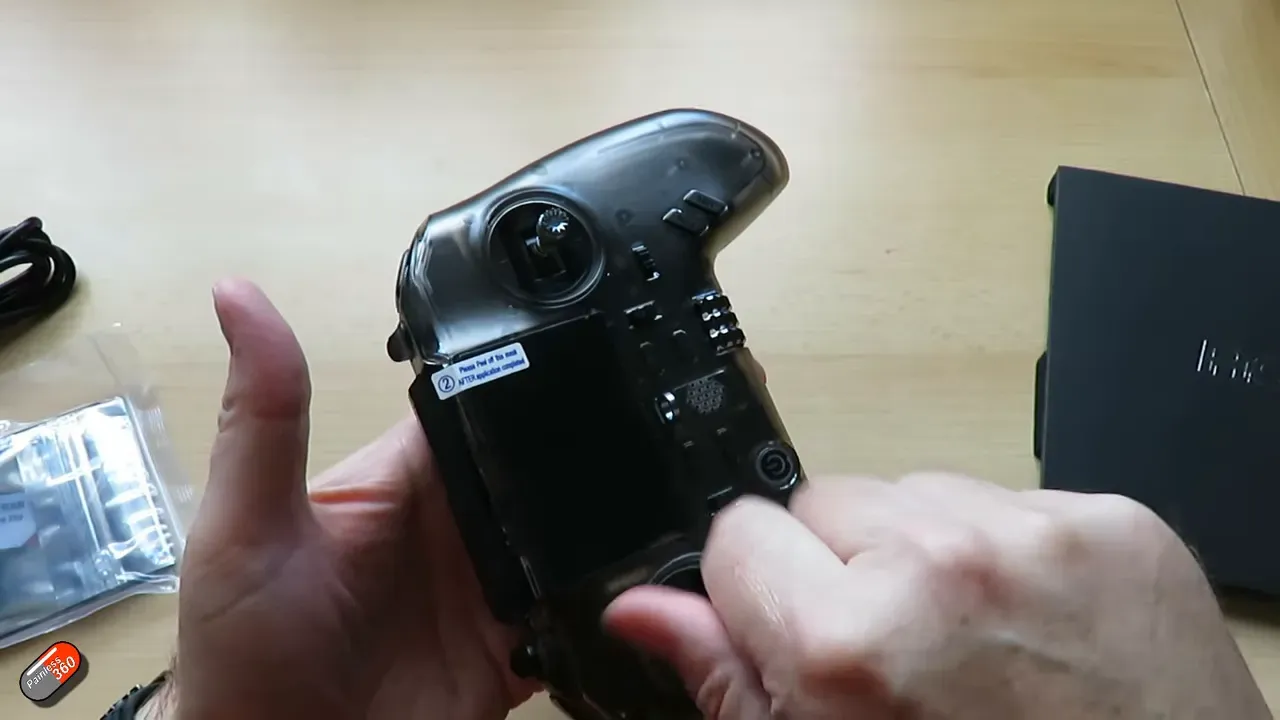
Painless360 describes the grip as more like a chunky game controller than a traditional RC transmitter. That’s good news for thumbers: the radio sits neatly in the palm, buttons are reachable, and the removable sticks store in the grips. Pinchers will manage, but ergonomically the layout favours thumbing.
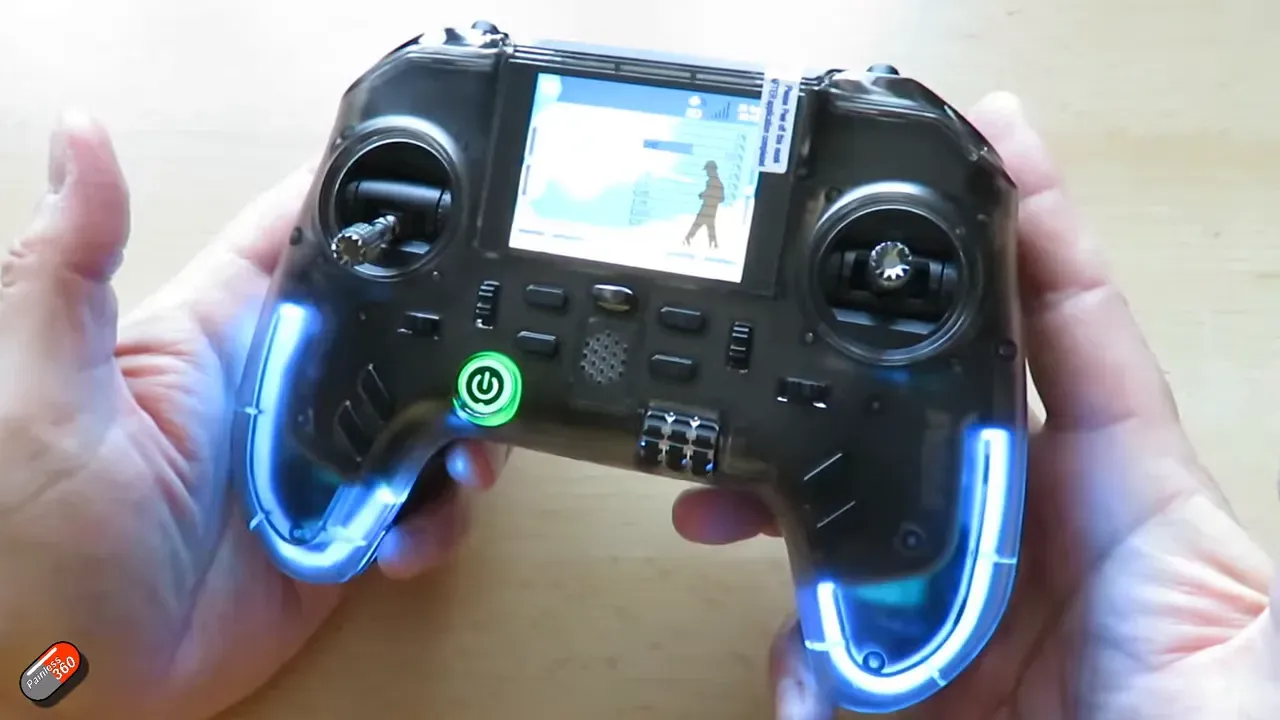
Highlights:
- Folding pull/twist antenna — Painless360 calls this a lovely, cute design that folds down for protection.
- Removable, height-adjustable sticks (but tiny — paint the tips bright so you don’t lose them in the grass).
- Front-mounted scroll wheel acts as enter key and is the only direct path into menus (no separate system button).
- Several front/back switches, back momentary buttons and a small JR bay for an external module.
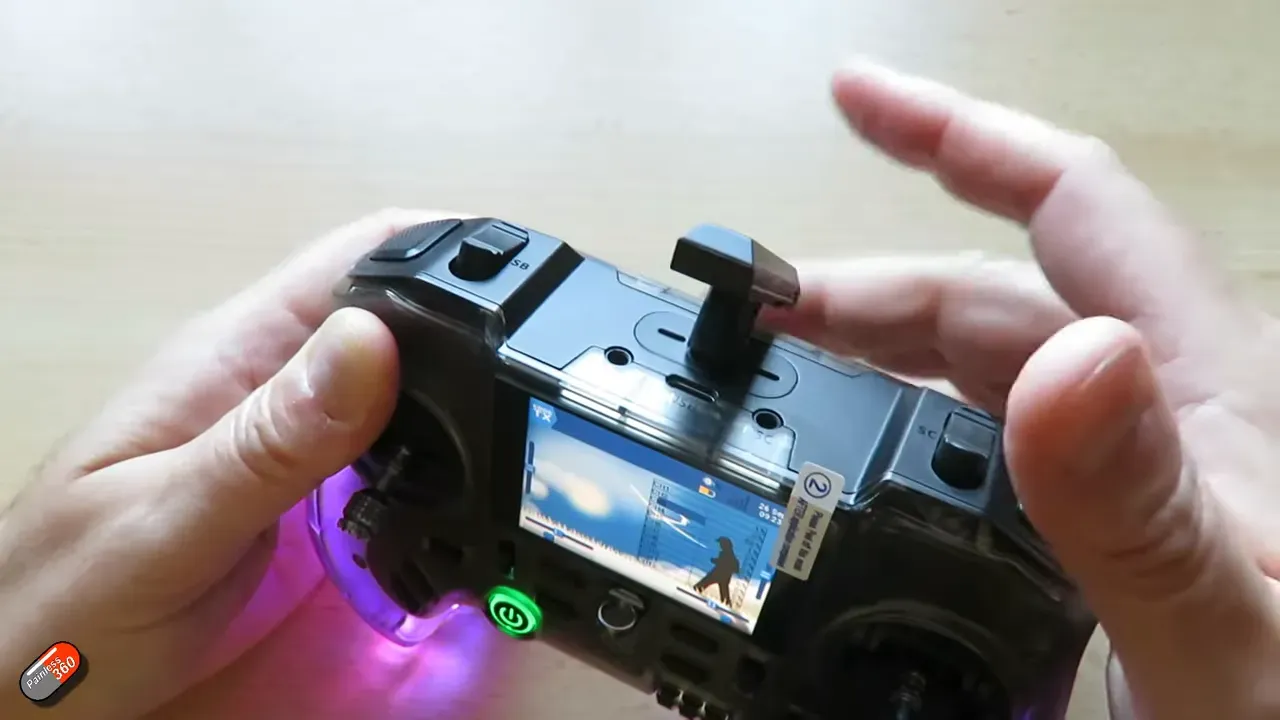
Controls and user interface — EdgeTX done with a twist
The PA01 runs EdgeTX, but FlySky’s button layout is a departure from the familiar. Instead of a cluster of navigation buttons on the left, controls are spread out and the scroll wheel is the primary 'enter' navigation method. Painless360 notes this takes a bit of getting used to — particularly because there’s no dedicated system button and the route to system settings requires opening the menu and navigating to radio settings.
Trim arrangement, gimbals and switching:
- Four traditional trims beside each control (handy for fixed wing).
- Gimbals feel serviceable — not premium, but perfectly flyable according to Painless360.
- Front latching switches are backlit and useful, although they toggle each other in some cases.
- Rotary encoder feels a bit stiff/notchy — possibly by design, but Painless360 found it noticeable.
Power, battery and build internals
The PA01 uses two 18650 cells placed under removable grips. Painless360 praises the thoughtfulness of the battery compartment: the grips pop off with a fingernail, and there’s a recessed tab to pull batteries out easily. He prefers charging cells externally with a proper charger for speed, though the radio supports USB‑C internal charging.
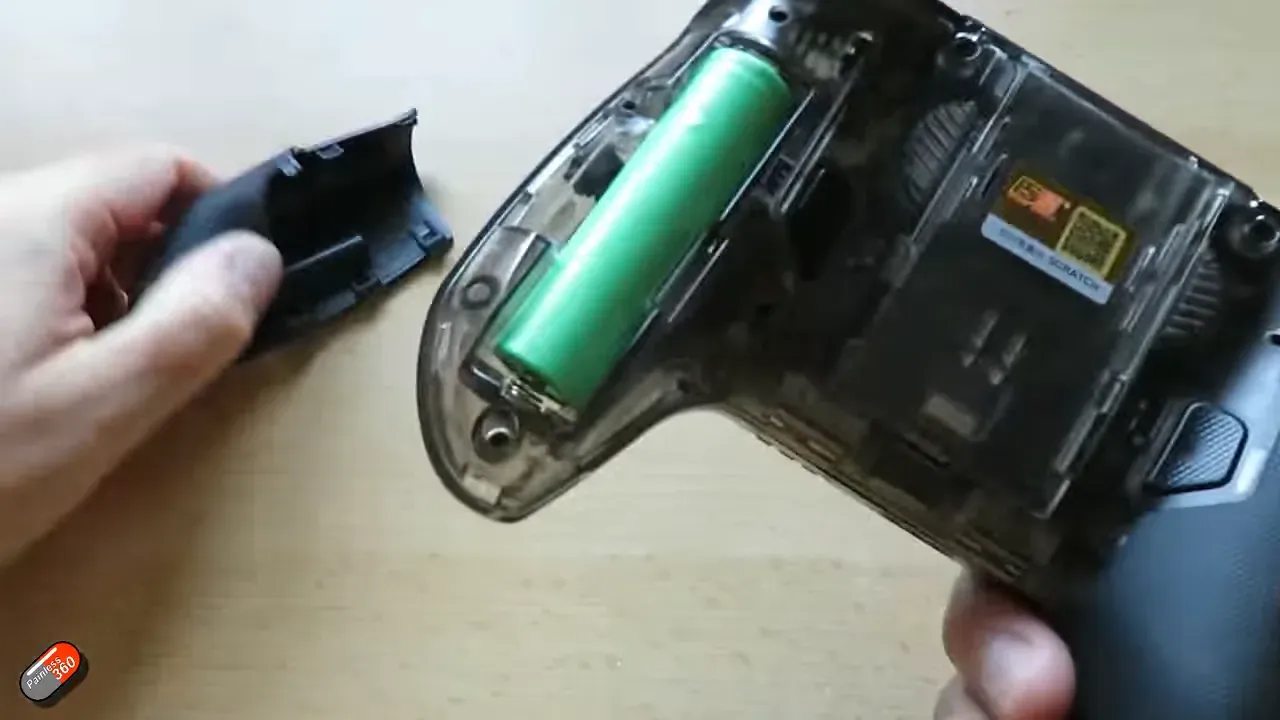
Inside, the radio has a clean layout with flat ribbon cables. Painless360 comments on the ribbon cables because of the community memory of similar cables causing issues in other radios — he hopes FlySky’s execution is more robust this time.
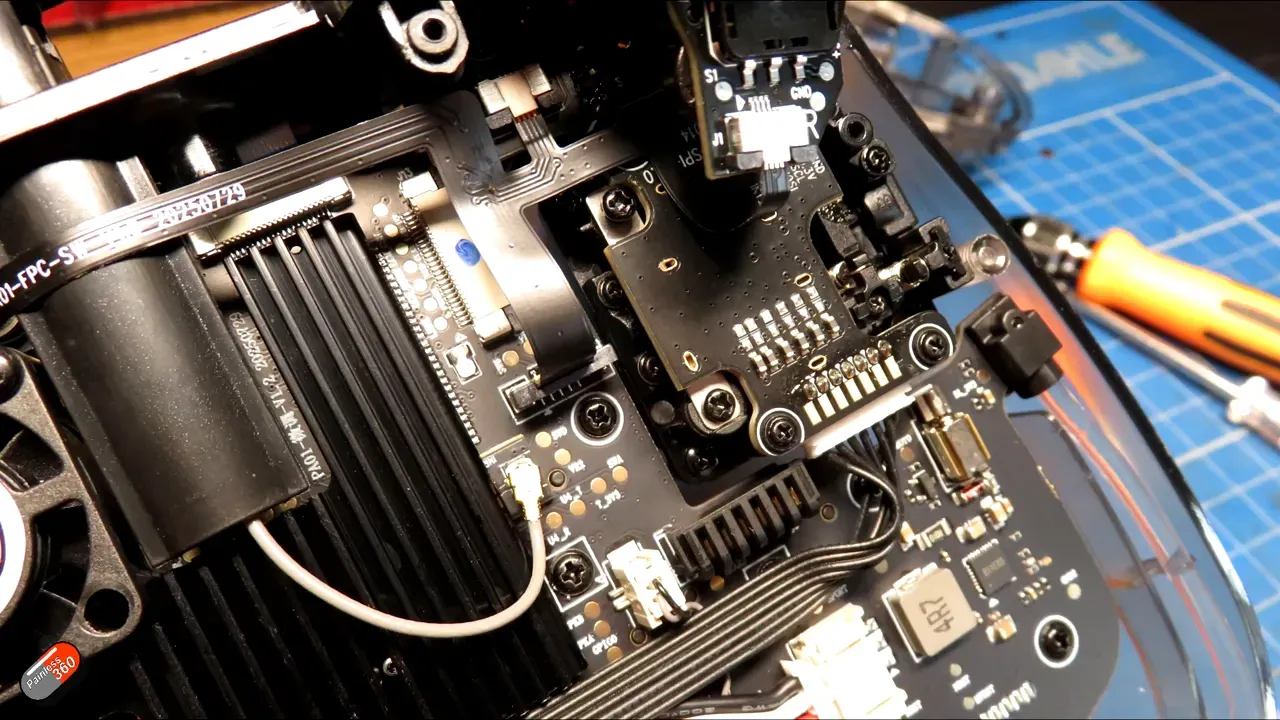
AFHDS3 vs ExpressLRS — the politics of radio mode
Arguably the most important functionality decision for many pilots is RF compatibility. FlySky ships the PA01 with AFHDS3 (their long‑standing protocol) on the internal radio, but the unit can be flashed to ExpressLRS. Painless360 flashed his review unit to ExpressLRS using FlySky’s companion application — the process is straightforward, but it’s a flash, not a toggle.
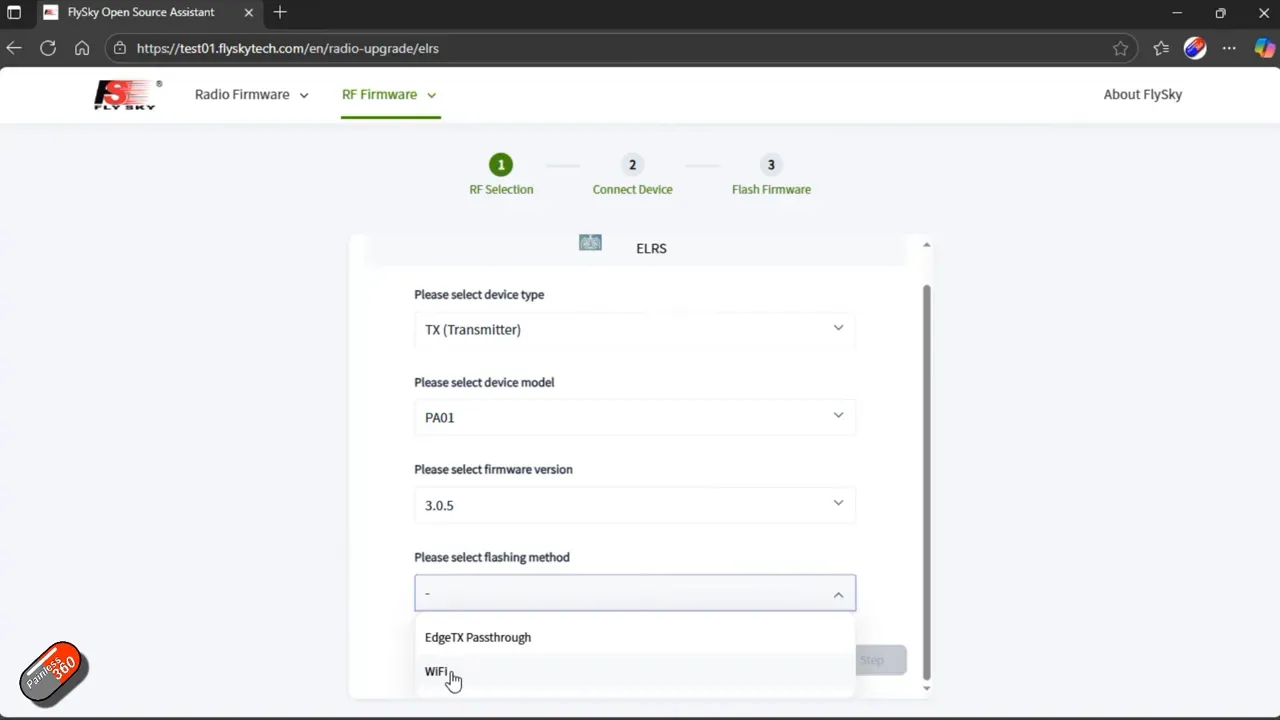
Key points:
- Either-or RF: you must choose AFHDS3 or ExpressLRS by flashing firmware — no runtime switching.
- Painless360’s update landed ExpressLRS v3.0.5 on the radio (a recent build).
- FlySky advertises Gold HTX partnership on the box — an encouraging sign for open‑source collaboration.
Painless360’s stance is clear: he likes that FlySky is supporting EdgeTX and ExpressLRS, but hopes FlySky will engage more directly with the open-source projects (contributions, official support in tooling, etc.) rather than simply using them.
Practical pros and cons — what might sway your wallet
Painless360 gives a balanced verdict. Here’s a distilled version.
Pros
- Compact, comfortable design for thumber pilots; removable sticks and foldable antenna are thoughtful touches.
- EdgeTX on board — plenty of community features and scripts possible.
- ExpressLRS-capable (via firmware flash) — opens up modern low-latency RF for FPV pilots.
- User‑replaceable 18650 cells and USB‑C charging; optional charging base pins on the bottom.
- Unique visual design (translucent case and LEDs) that helps identify radios at night.
Cons
- Ships with AFHDS3 by default — you must flash to use ExpressLRS if that’s your preference.
- No runtime RF switching — it’s either AFHDS3 or ExpressLRS per firmware flash.
- Non‑touch screen and rotary encoder that feels a touch stiff.
- Default sprung throttle required opening the case to alter — fiddly for some users.
- No protective case included (Painless360 strongly recommends a soft case).
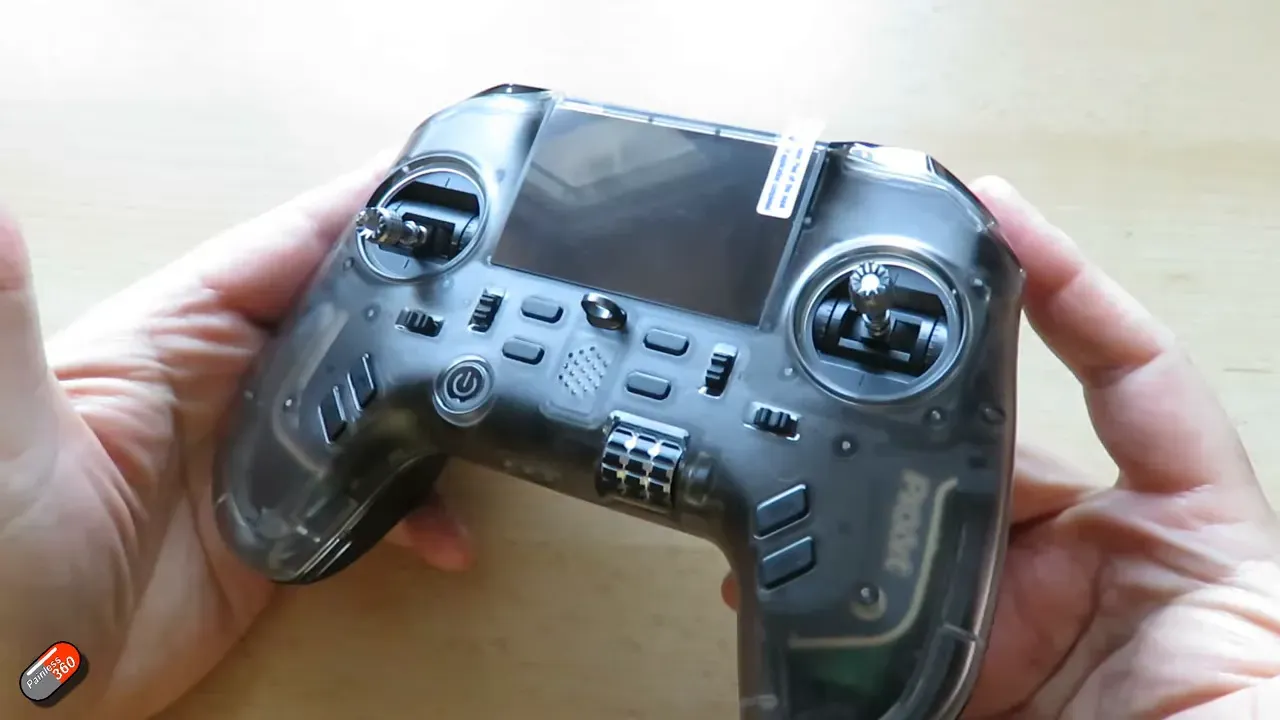
Who is the PA01 for?
Painless360 concludes the PA01 is a very solid option for multi‑rotor and BetaFlight pilots who want a compact EdgeTX radio that doesn’t feel like every other transmitter on the field. If you fly quads, whoops or basic fixed wing on INAV, the PA01 is a sweet, modern option. If you’re a fixed‑wing pilot who needs lots of switches for advanced mixes (INAV, RW setups, complex FBL systems), the PA01 may be short on physical switches.
Recommendations & practical tips from Painless360
- If you plan to use ExpressLRS, factor in the time to flash the radio and test compatibility with your receivers — it’s straightforward, but it’s a firmware change.
- Buy a soft case — the radio doesn’t ship with one and the translucent plastic will scar in a backpack.
- Paint the stick tips bright yellow or orange — they’re small and easy to lose in grass.
- Expect a short learning curve for menu navigation if you’re used to a traditional EdgeTX button layout.
Conclusion — should you buy one?
Painless360’s verdict: FlySky’s PA01 is an impressive entry. It’s funky, ergonomically smart for thumbers, and importantly, FlySky has embraced EdgeTX and ExpressLRS — even if the execution isn’t perfect. If you want a compact, modern transmitter for quads and everyday FPV flying, the PA01 is a strong contender. If you need extensive physical switches, instant RF mode switching, or a touchscreen, look elsewhere.
Watch the original review by Painless360 for the full unboxing, internal teardown shots and live menu walkthroughs: https://www.youtube.com/watch?v=fPfm3ZjOTsE
FAQ
Do I need to flash the PA01 to use ExpressLRS?
Yes. The PA01 ships with AFHDS3 on the internal RF module by default. Switching to ExpressLRS requires flashing the radio’s firmware using FlySky’s update tool. It’s not a runtime toggle — it’s a firmware change.
Can I run both AFHDS3 and ExpressLRS and swap between them?
No — at present the internal RF is one or the other. You could use an external JR bay module for other protocols, but the internal firmware itself must be flashed to change the internal RF protocol.
Does the PA01 have a touchscreen?
No. The screen is a 2.4" 240×320 colour display but it’s not touch. Navigation is via the scroll wheel/enter and the distributed button layout.
What batteries does the radio use and can I charge it internally?
The PA01 uses two 18650 cells under the grips. It supports USB‑C charging, and Painless360 recommends carrying spare charged 18650s and using an external charger for faster charging cycles.
Is the antenna design any good?
Painless360 likes the pull/twist/tilt folding antenna — he calls it a lovely, practical design that protects the antenna when packed away.
Is there a case included?
No. The PA01 does not ship with a protective case. Painless360 recommends buying a soft case to avoid scratches and damage when carrying it in a backpack with quads or gear.
This article was created from the video Just released: Flysky ship their newest radio with EdgeTX and ExpressLRS! PA01 Radio.




